Overview
The article highlights essential strategies for managing sensory issues at home, focusing on the significance of creating a nurturing environment for children with autism. It presents various approaches, such as:
- Adjusting sensory stimuli
- Implementing calming techniques
- Fostering communication skills
These strategies empower caregivers to effectively address sensory overload and enhance their child's overall well-being.
As parents, understanding how to support your child through sensory challenges can be both daunting and rewarding. By making small adjustments in your home environment and employing calming techniques, you can create a haven where your child feels safe and understood. Consider sharing your experiences or seeking support from others who are on a similar journey.
Ultimately, the goal is to foster a supportive atmosphere that not only addresses sensory needs but also nurtures your child's emotional health. Embrace these strategies and take action to enhance your child's quality of life, knowing that you are not alone in this journey.
Introduction
Understanding and managing sensory sensitivities at home is essential for the well-being of children with autism. Nearly 95% of these children experience some form of sensory processing challenges, which can significantly impact their daily lives. This article offers ten effective strategies designed to empower parents in creating a sensory-friendly environment. By implementing these strategies, caregivers can help their children navigate daily life with greater ease and comfort. Yet, with so many potential triggers and responses, how can caregivers identify the best approaches tailored to their child's unique needs? Your journey toward a more supportive home environment begins here.
About ASD Media: Empowering Parents with Resources for Sensory Issues
At ASD Media, we truly care about enhancing the implementation of ABA therapy. Our mission is to provide effective strategies that help manage challenging behaviors, improve social skills, and support children with autism in coping with autistic sensory issues. We understand the unique journey parents face, and that’s why we offer a comprehensive array of resources, including the Autism Partner Toolkit. This toolkit is designed to support both parents and professionals, fostering a collaborative community where experiences can be shared and knowledge exchanged.
By subscribing to our newsletter, you can stay updated with the latest resources that empower you to effectively manage autistic sensory issues. With approximately 1 in 31 children in the U.S. recognized with autism, we know how crucial it is to build a supportive network. Our community-focused approach not only assists in navigating the intricacies of autistic sensory issues but also ensures that families feel included in a broader community dedicated to collaboration and development in the ABA therapy field.
We invite you to join us in this journey. Share your experiences, insights, and questions—together, we can create a nurturing environment that uplifts everyone involved.
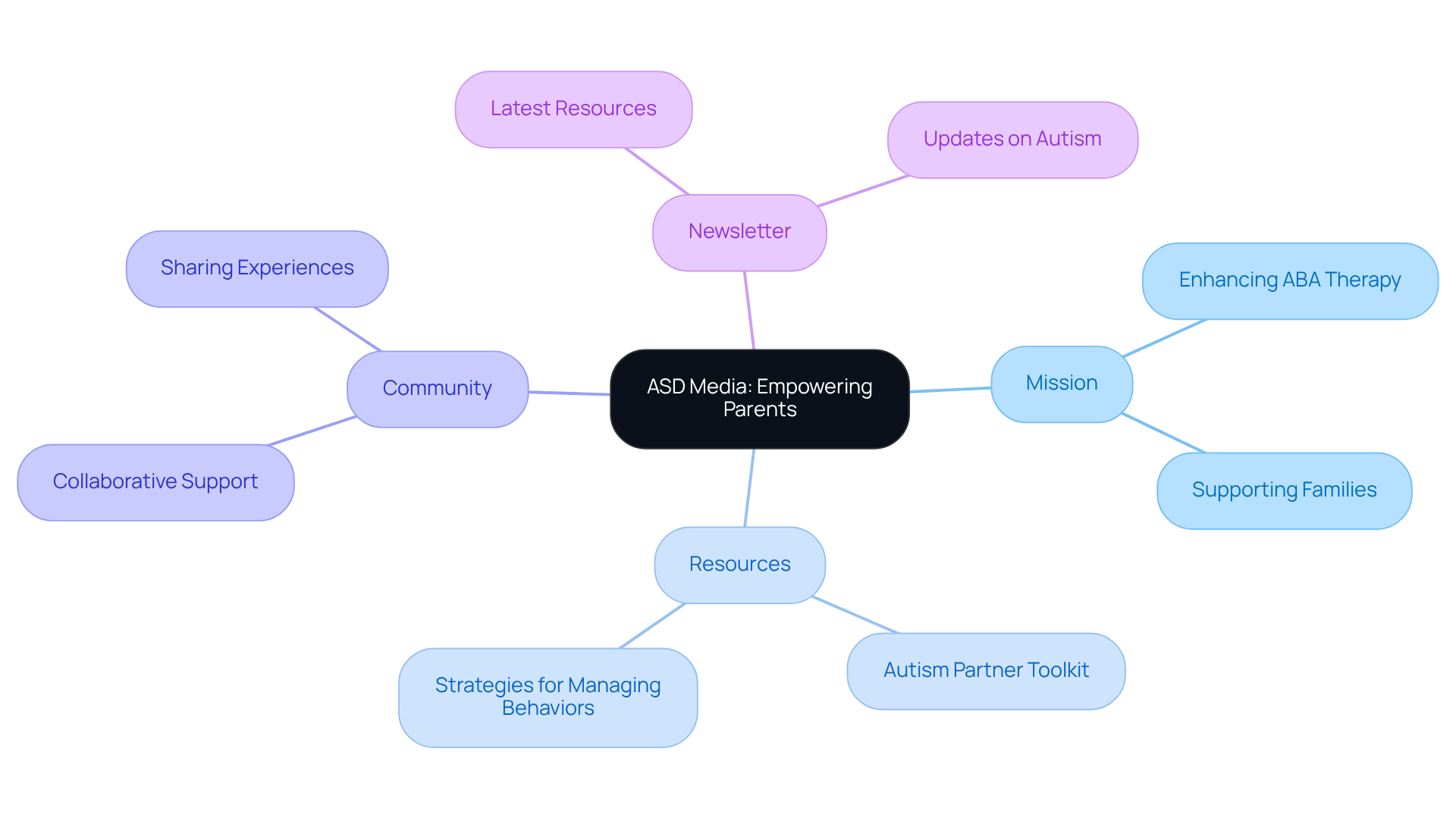
Understanding Sensory Sensitivities: Prevalence and Impact on Autistic Individuals
Sensory reactions are a common experience for many autistic individuals, as they often face autistic sensory issues, with studies indicating that 90% to 95% encounter some form of sensory processing variations. These reactions may manifest as hypersensitivity (over-responsiveness) or hyposensitivity (under-responsiveness) to various stimuli, profoundly influencing how individuals engage with their environment. Understanding autistic sensory issues is crucial, as they serve as key diagnostic criteria for autism spectrum disorder (ASD). Parents and caregivers play an essential role in recognizing these differences.
For instance, auditory processing challenges have emerged as significant indicators of ASD severity. Research shows that greater severity is often linked to increased auditory responsiveness. This insight can guide caregivers in implementing interventions that cater to the unique needs of individuals with autism. Sensory issues can be categorized into four quadrants:
- Responsiveness
- Seeking
- Avoiding
- Low registration
This classification provides a comprehensive overview of how these differences surface in daily life.
By addressing perceptual challenges, caregivers can help mitigate behavioral difficulties and enhance overall well-being. This, in turn, promotes better social interactions and more enriching learning experiences for autistic individuals. A study conducted in Jaffna, Sri Lanka, underscores the importance of recognizing these processing difficulties, as every individual evaluated displayed at least one sensory-related issue. By adopting specific strategies tailored to these sensitivities, caregivers can foster supportive environments that lead to positive outcomes, ultimately making a meaningful difference in the lives of those they care for.
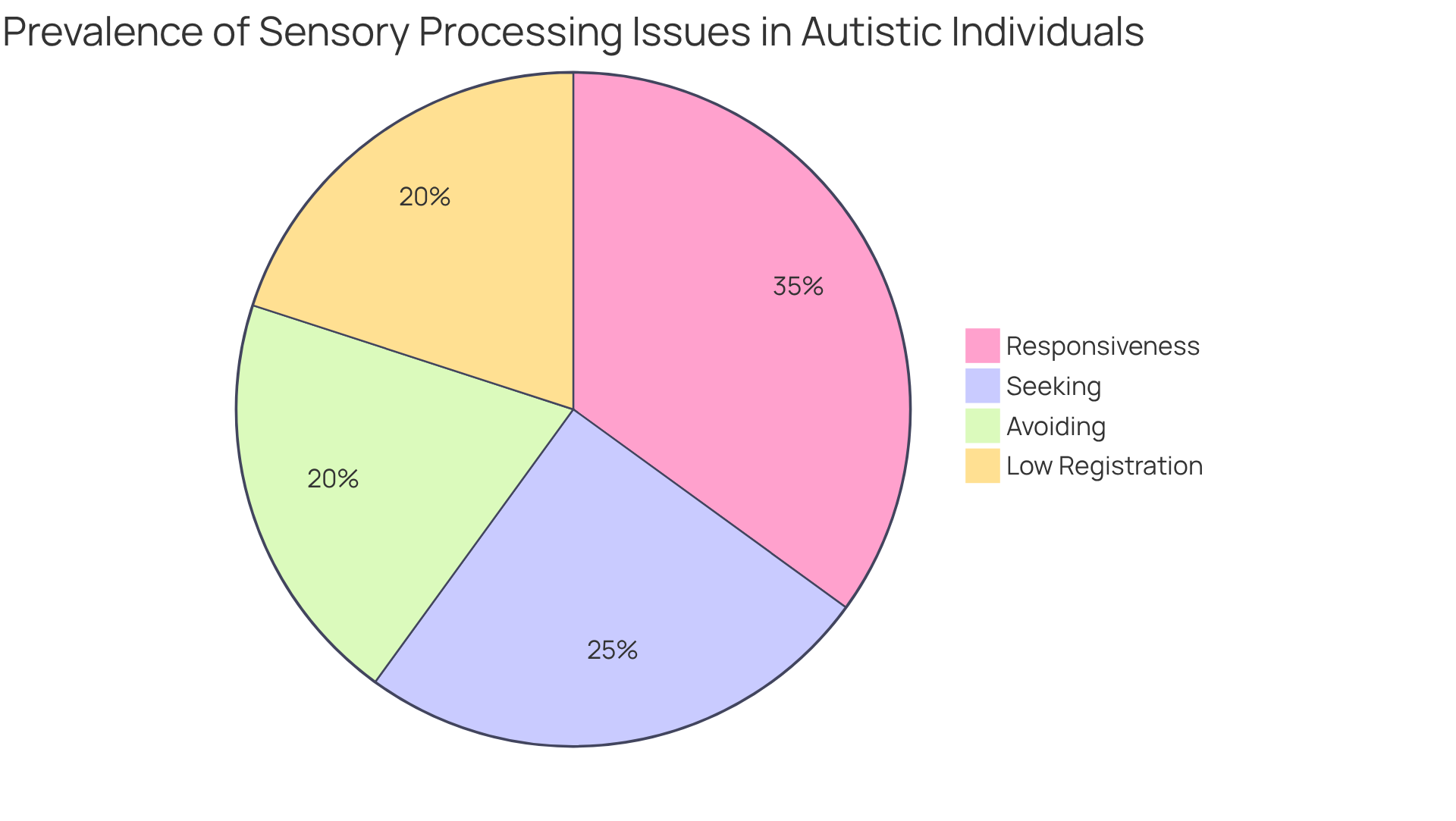
Identifying Sensory Triggers: Common Sources of Overload for Autistic Children
Common stimuli that can impact autistic children include bright lights, loud sounds, specific textures, and intense odors. It's important to understand that over 96% of individuals with Autism Spectrum Disorders (ASD) experience autistic sensory issues, which can lead to sensory overload. This often manifests as anxiety, agitation, or meltdowns. For example, a young person might feel overwhelmed in a brightly lit grocery store or react negatively to the sound of a vacuum cleaner.
As parents, you play a crucial role in navigating these challenges. By closely observing your child's reactions to different environments and situations, you can gain valuable insights. Recording specific triggers helps you understand your child's unique perceptual characteristics, which may vary from day to day. Recognizing signs of Sensory Processing Disorder (SPD) is essential, as these signs can change. This awareness empowers you to introduce tailored interventions, such as creating accommodating spaces at home or providing breaks throughout the day.
Identifying signs of overload, like withdrawal or distressed behavior, is vital for timely intervention. As Jeanette Baker-Loftus wisely noted, 'Assisting my offspring during an emotional outburst is not providing them with what they desire; it's about offering them what they require in that moment.' By fostering an understanding of autistic sensory issues, including common olfactory triggers such as fragrances and strong foods, you can significantly enhance your child's quality of life and emotional well-being.

Creating a Sensory-Friendly Home: Strategies for Comfort and Safety
Creating a sensory-friendly home can be a transformative journey for both you and your child, especially in addressing autistic sensory issues. By implementing a few thoughtful strategies, you can foster a nurturing environment that addresses their unique needs.
-
Lighting Adjustments: Consider opting for soft, dimmable lighting instead of harsh fluorescent lights. This simple change can create a calming atmosphere, helping to prevent overwhelming stimulation that may lead to withdrawal or emotional escalation. Calming colors like blues and greens can also enhance visual comfort, making your home a soothing space.
-
Soundproofing: Noise can be a significant source of distress for many children. To minimize this, think about incorporating soundproofing materials or using white noise machines to mask distracting sounds. These adjustments can significantly reduce auditory stimuli, which is beneficial for managing autistic sensory issues and promoting a more peaceful environment where your child can thrive.
-
Safe Spaces: It’s essential to have designated quiet areas equipped with calming tools such as weighted blankets and soft toys. These spaces provide a retreat for your child when they feel overwhelmed due to autistic sensory issues, allowing them to self-regulate and manage sensory overload. As Yitz Diena notes, "Common manifestations include meltdowns, repetitive movements, or stimming behaviors like hand-flapping or spinning," underscoring the importance of having safe spaces available.
-
Organizational Tips: Keeping your home organized and clutter-free can greatly reduce visual distractions. A neat setting not only helps your child concentrate more effectively but also fosters a sense of safety, lowering stress linked to sensitivities. Additionally, integrating organized routines with planned breaks can empower your child to handle challenges related to autistic sensory issues during daily tasks.
By evaluating your child's distinctive perceptual profile, you can tailor these approaches to better meet their specific needs. Together, we can create a supportive environment that nurtures their well-being.
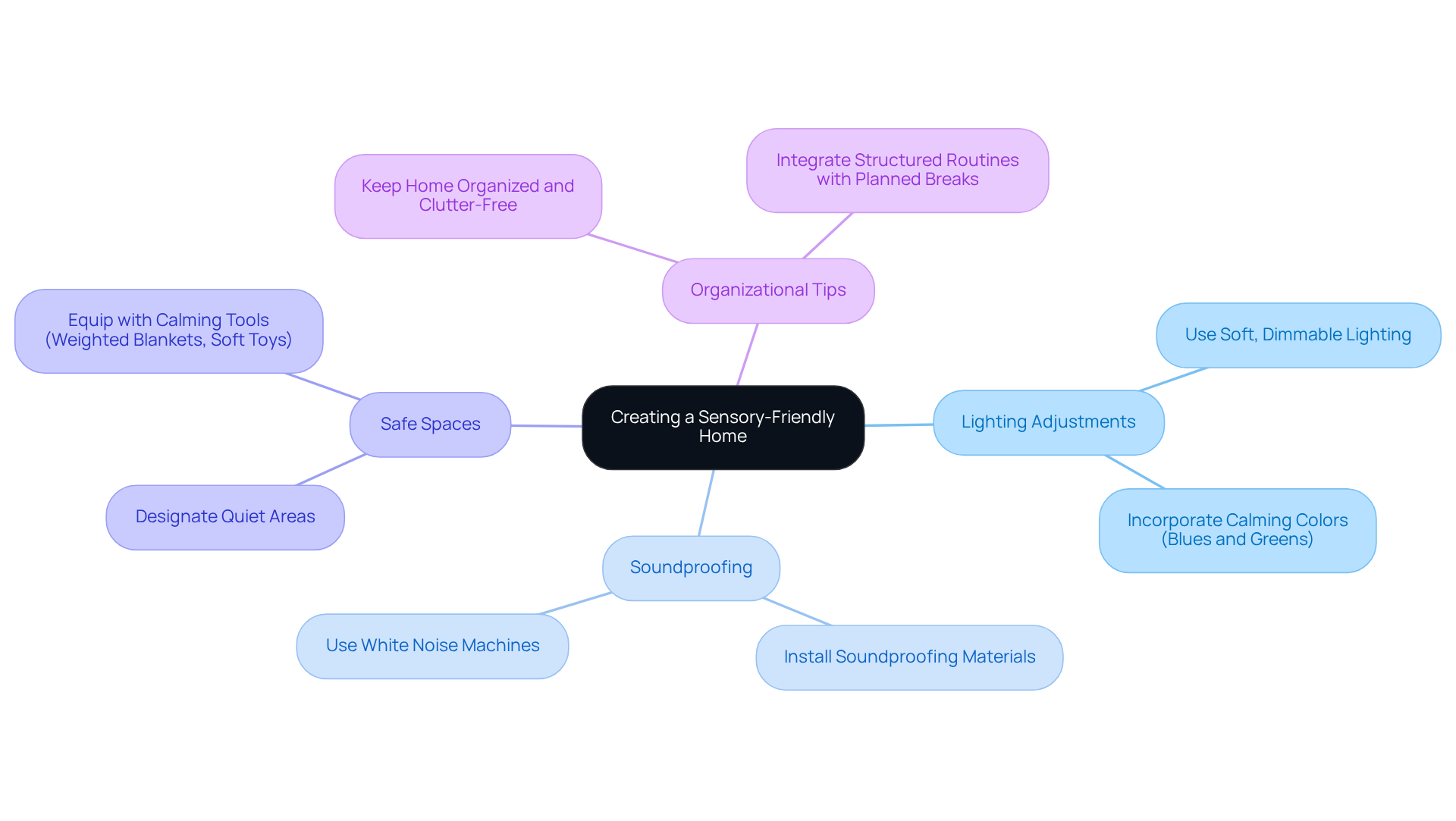
Implementing Sensory Breaks: Techniques to Help Manage Overstimulation
Incorporating breaks for the senses throughout the day can significantly aid in managing autistic sensory issues and overstimulation in children with autism. It’s essential to consider effective techniques that can make a difference in their daily lives.
Movement Activities: Encouraging physical activities such as jumping, swinging, or dancing can be incredibly beneficial. These activities not only help release pent-up energy but also provide essential vestibular and proprioceptive input, aiding in the regulation of how stimuli are processed. Research indicates that up to 70% of children with autism experience autistic sensory issues, making these activities vital for their overall well-being. For example, deep pressure activities like using weighted blankets or engaging in trampoline jumping can be especially helpful.
Calming Techniques: Introducing calming activities such as deep breathing exercises, yoga, or the use of fidget toys can also be effective. Understanding each child's unique perceptual needs, particularly when addressing autistic sensory issues, is crucial, as responses to these methods can vary widely. Some children may find comfort in soothing music, while others might prefer quiet time in a designated relaxation area.
Planned Intervals: Establishing a routine that includes regular breaks of 5-15 minutes allows children to relax and refresh their systems. These breaks can effectively help regulate the nervous system, addressing autistic sensory issues and enhancing focus and engagement in learning activities. Specialists emphasize that "Integrating breaks for the senses into everyday practices can assist children in managing their overload, enabling them to engage in activities such as deep pressure exercises or listening to calming music." By weaving these breaks into daily routines, parents can empower their children to navigate sensory challenges with greater ease.
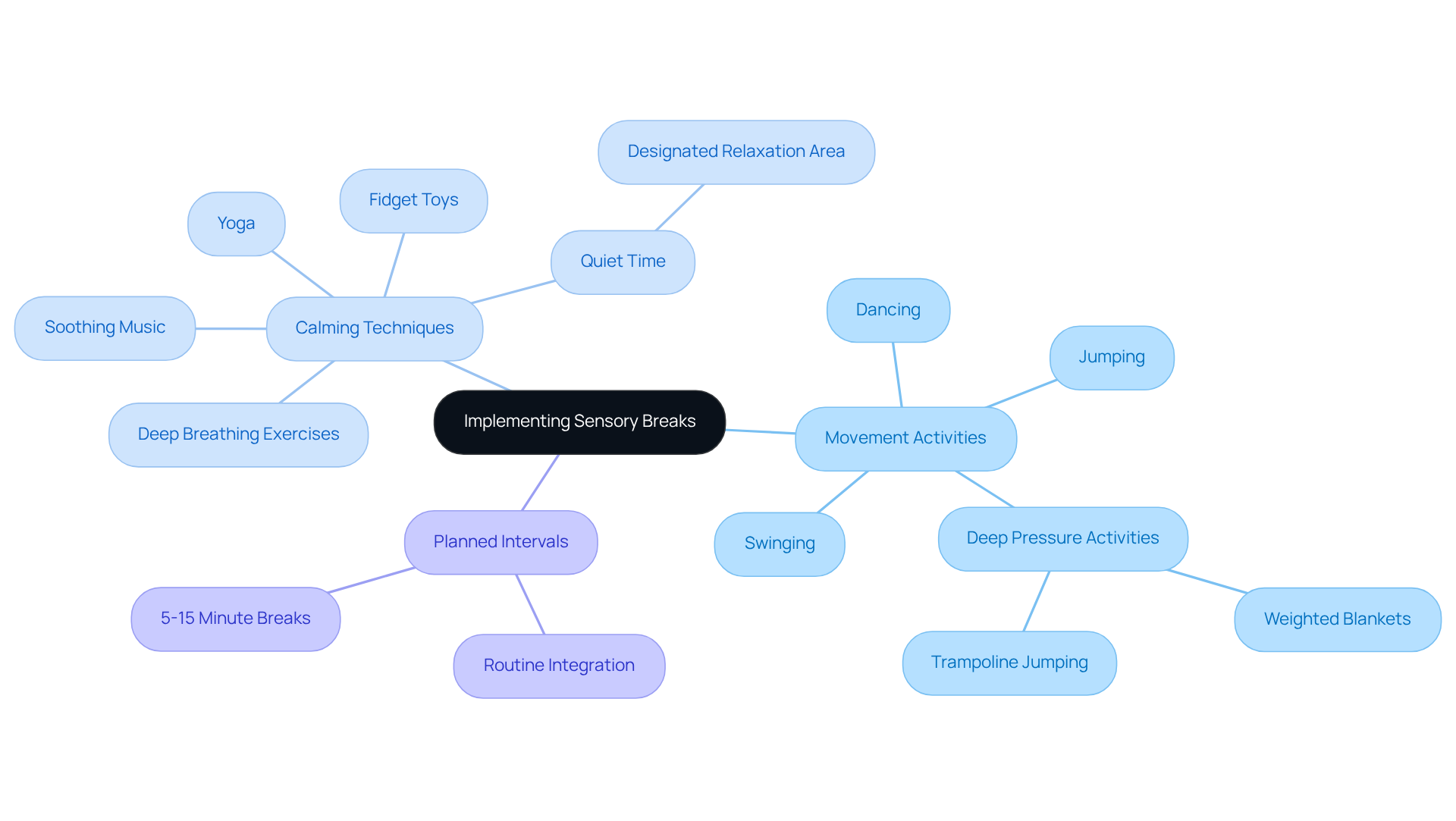
Using Visual Schedules: Enhancing Predictability for Autistic Children
Visual schedules serve as invaluable tools for enhancing predictability in the lives of individuals facing autistic sensory issues. By providing a clear visual representation of daily activities, these schedules help young individuals grasp what to expect, effectively alleviating the anxiety often associated with transitions and supporting those with autistic sensory issues.
Imagine a child eagerly anticipating their day, feeling secure in the knowledge of what comes next. Parents can create these visual schedules using images or symbols that represent various tasks, empowering youngsters to follow along and gain a sense of control over their routines. This simple act can transform daily life, fostering independence and confidence.
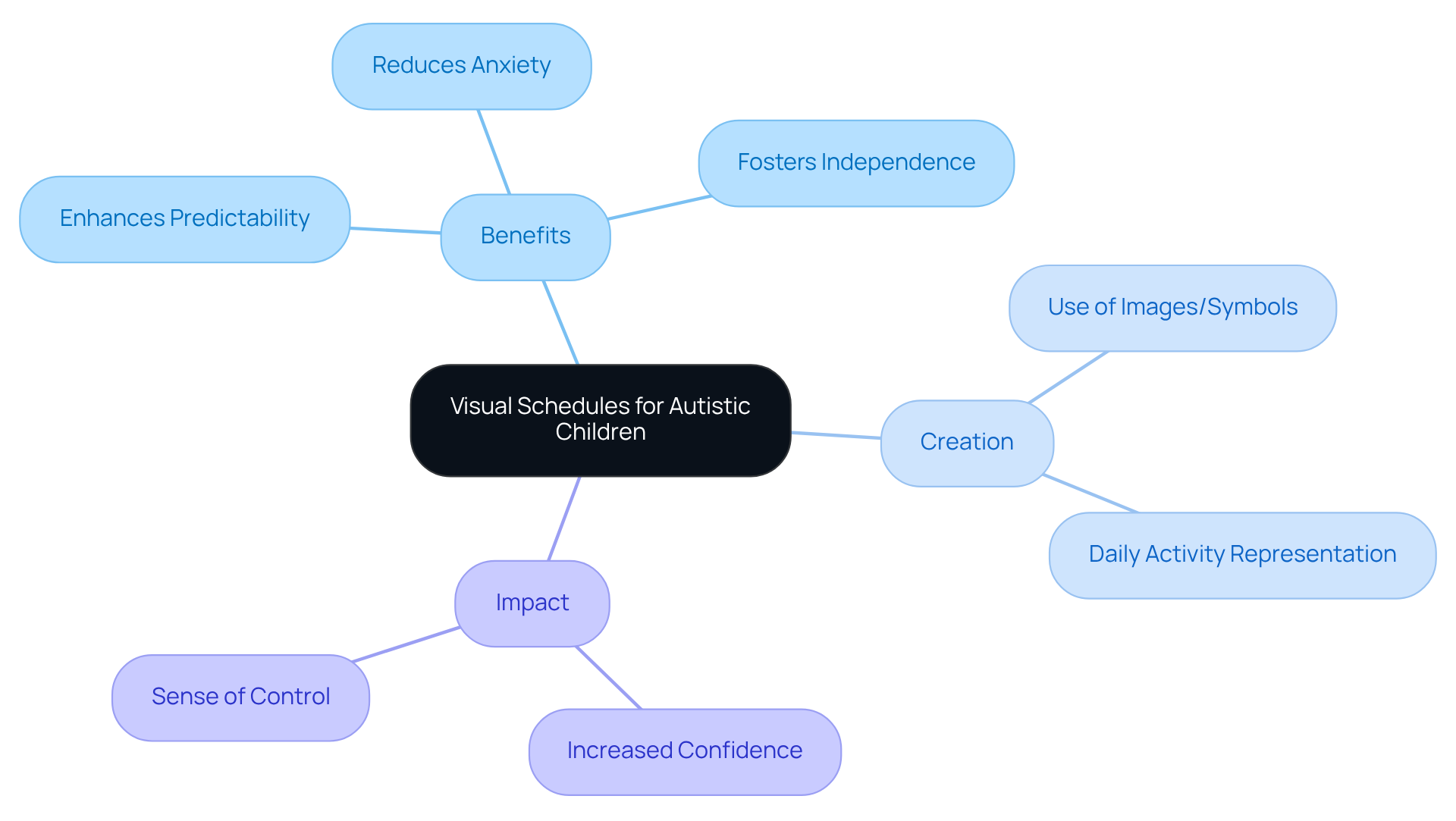
Recognizing Sensory Overload: Signs and Symptoms to Watch For
Recognizing the signs of overload in children, particularly those related to autistic sensory issues, is crucial for effective management, and these indicators can manifest in various ways. It’s essential for parents to be aware of these signs to provide the necessary support.
-
Increased Agitation: Children may exhibit restlessness, fidgeting, or heightened irritability, especially in overstimulating environments like busy shopping malls. In such settings, they might feel overwhelmed, leading to anger or irritability as they struggle to cope with the barrage of stimuli.
-
Withdrawal: Some children may retreat from social interactions, seeking solitude as a protective measure against overwhelming stimuli. This behavior can be exacerbated by feelings of fear or anxiety related to crowded spaces, making it even more important for parents to be observant.
-
Meltdowns: Emotional outbursts or shutdowns can occur when a child feels overwhelmed, resulting in a loss of control. It’s vital to understand that a meltdown, which can occur due to autistic sensory issues, is a response to overwhelming stimuli or emotional distress, not merely a tantrum.
As parents, staying alert to these signs and responding promptly can make a significant difference. Creating a soothing atmosphere and allowing for breaks can help children manage their feelings. Insights from occupational therapists emphasize the importance of personalized strategies. Recognizing specific triggers and implementing coping methods—such as breathing exercises, using headphones or earplugs, sitting away from bright lights, and taking breaks—can be incredibly beneficial for individuals dealing with autistic sensory issues.
Real-life examples illustrate how caregivers can effectively address overload by identifying early signs and providing appropriate support. By nurturing a comfortable and supportive environment, parents can help their children navigate challenging situations with greater ease.
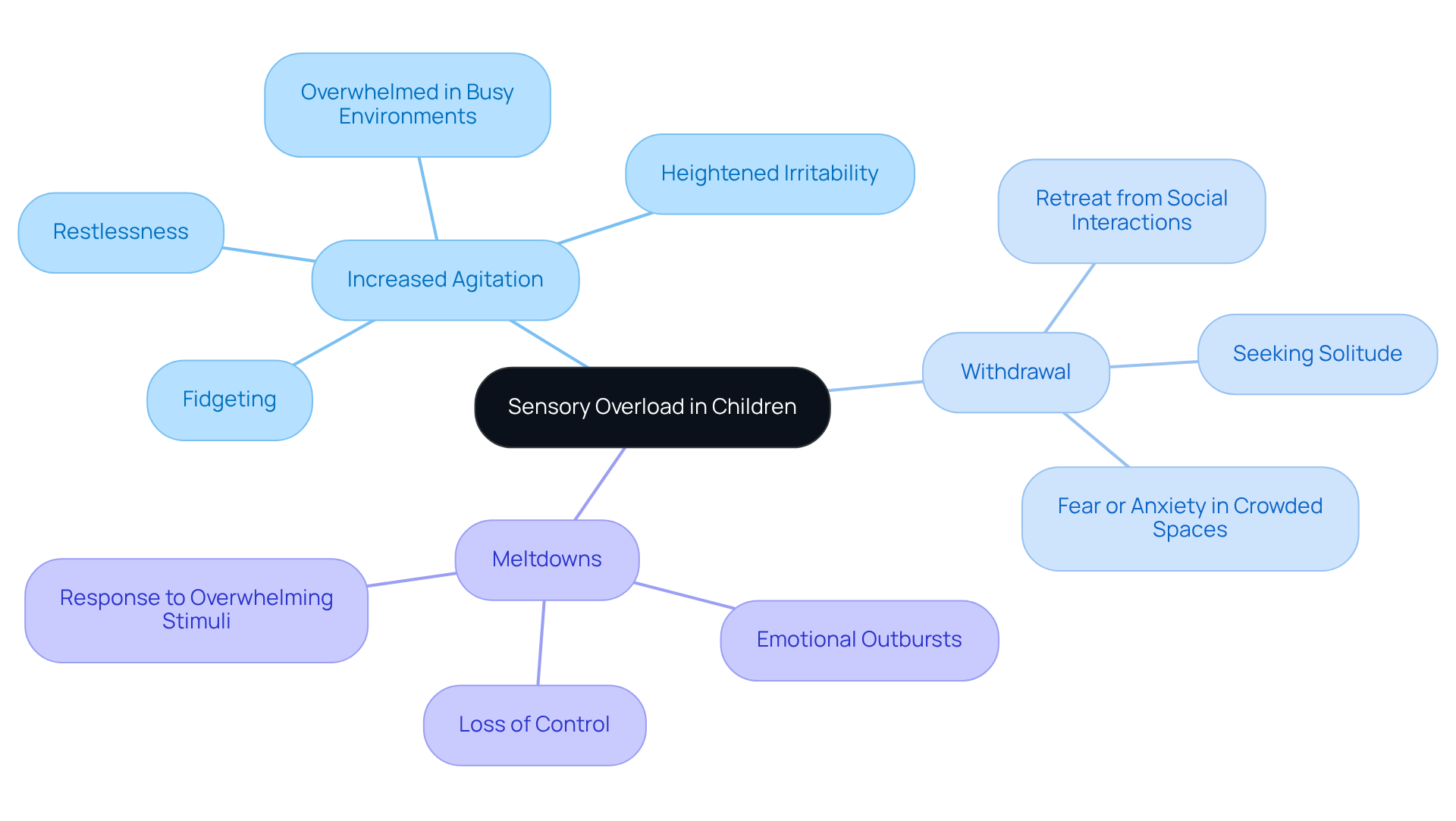
Teaching Coping Strategies: Empowering Children to Manage Sensory Sensitivities
Empowering young individuals with coping strategies is crucial for assisting them in managing sensitivity challenges. By equipping them with effective techniques, we can nurture their ability to navigate the world around them.
- Communication Skills: It’s essential to encourage children to express their sensory needs and preferences through words, gestures, or visual aids. Research shows that enhancing communication abilities significantly aids autistic individuals in sharing their experiences, leading to better understanding and support from caregivers. For instance, youngsters who develop effective communication skills are 30% more likely to successfully convey their sensory preferences, which fosters improved interactions with their surroundings. As Amanda Baggs wisely noted, 'Don't think that there's a different, better individual 'hiding' behind the autism.' This underscores the importance of acknowledging and supporting each child's unique communication needs.
- Self-Regulation Techniques: Teaching calming strategies, such as deep breathing, counting, or utilizing stress balls, can be transformative. These methods not only help manage immediate sensory overload but also cultivate long-term emotional resilience. By practicing these techniques regularly, young individuals can learn to self-soothe and regain control during overwhelming moments.
- Gradual Exposure: Introducing new experiences gradually allows youngsters to build tolerance and confidence over time. This approach is vital for fostering adaptable responses to environmental challenges, ultimately empowering them to engage more fully with their surroundings. Parents can start by presenting less intense sensory experiences and progressively increasing the complexity as their child's comfort level grows.
By applying these strategies, parents and advocates can significantly enhance the ability of young individuals with autism to manage their sensitivities, fostering a more supportive and understanding environment.
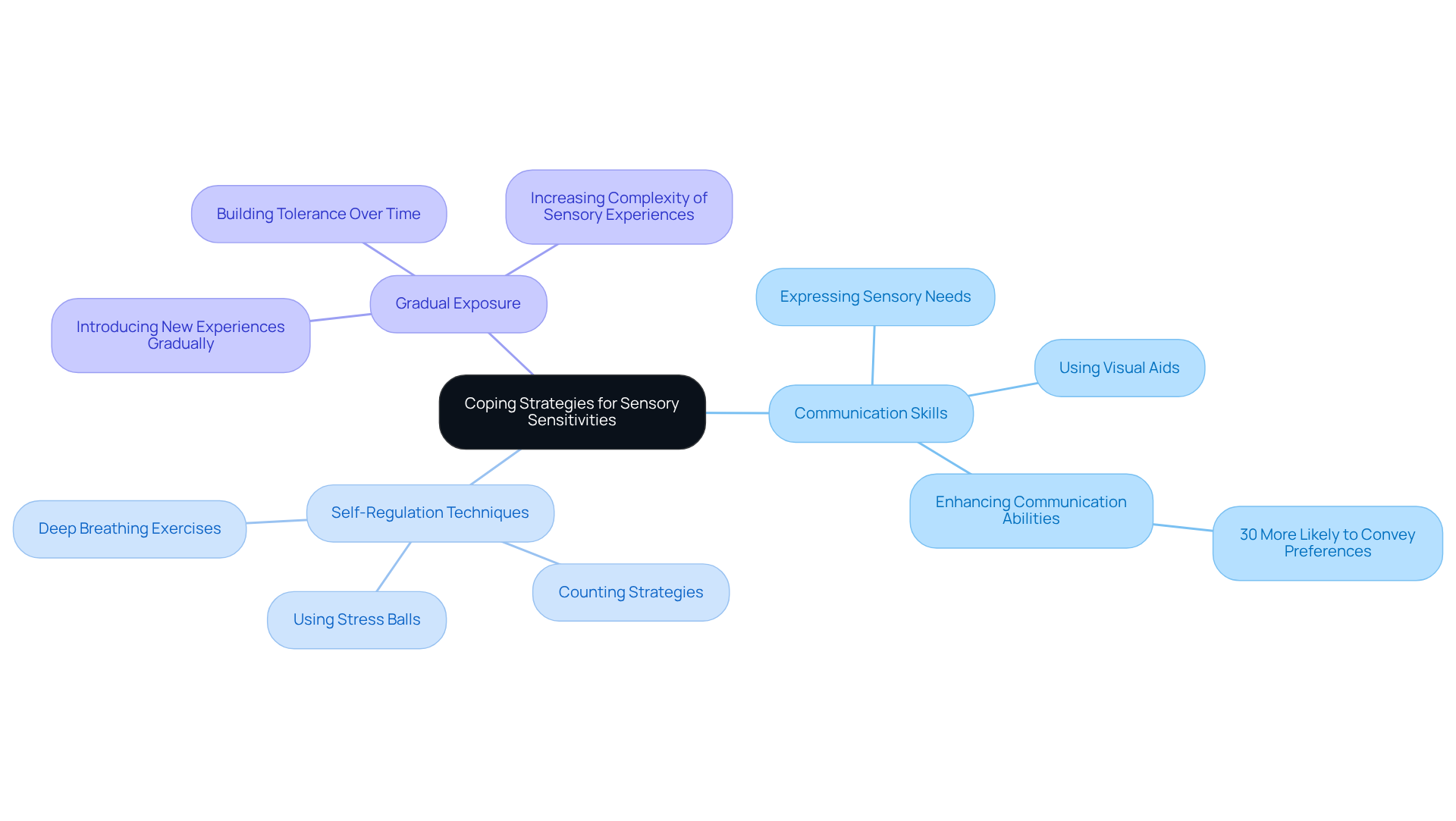
Seeking Professional Support: Therapy Options for Sensory Processing Challenges
For parents of youngsters facing considerable processing difficulties, seeking professional assistance can be a vital step. Understanding the options available can help you make informed decisions for your child's well-being. Here are some therapy options that may provide the support your child needs:
-
Occupational Therapy (OT): Occupational therapists design individualized sensory diets tailored to each child's unique needs. These diets include specific activities aimed at improving perception, helping young individuals acquire crucial skills for everyday life. Research shows that occupational therapists assist children in processing sensory information, which can lead to enhanced concentration, self-control, and an overall better quality of life for those with autistic sensory issues.
-
Sensory Integration Therapy (SIT): This structured approach focuses on helping children process information more effectively through play-based activities. SIT incorporates various techniques, such as swinging, weighted blankets, and tactile play, to promote emotional growth and enhance motor skills. Data indicates that children involved in integration therapy often report greater success in daily functioning goals, including improved social interactions and academic performance.
-
Applied Behavior Analysis (ABA) Therapy: ABA therapy provides organized interventions that address specific challenges related to perception. By encouraging adaptive behaviors, ABA helps children navigate environments rich in sensory input more effectively, reinforcing positive responses to stimuli. This approach is particularly beneficial for children with autism who face autistic sensory issues, as it supports their development in a structured manner.
As you explore these options, consider reaching out to professionals who can guide you and your child on this journey. Your support and understanding play a crucial role in their development.
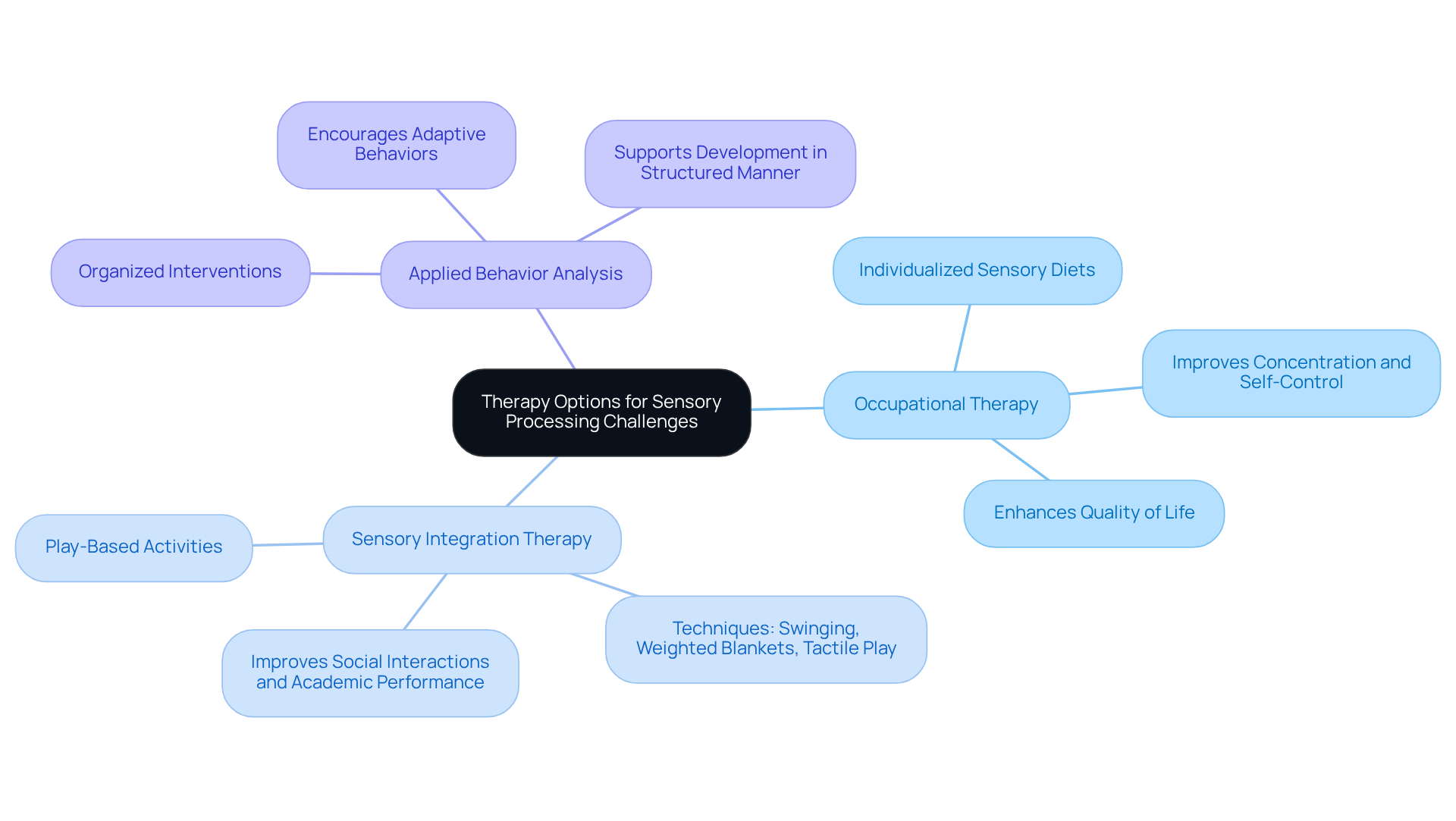
Building Community: Connecting with Other Parents Facing Sensory Challenges
Connecting with fellow caregivers who face similar autistic sensory issues can be incredibly valuable. By joining local support groups or participating in online communities, caregivers can share their experiences and resources. These interactions provide a space for exchanging advice, strategies, and emotional support, fostering a sense of community and understanding. Platforms like ASD Media enable caregivers to connect and share their journeys, significantly enhancing their support network.
Research indicates that involvement in support groups can greatly reduce stress and anxiety among caregivers, which is crucial as many guardians of autistic individuals report heightened stress levels due to autistic sensory issues. Establishing these community connections allows parents to alleviate feelings of isolation and gain insights that can improve their children’s experiences with autistic sensory issues.
With autism affecting approximately 1 in 100 children worldwide, the importance of these connections truly cannot be overstated.
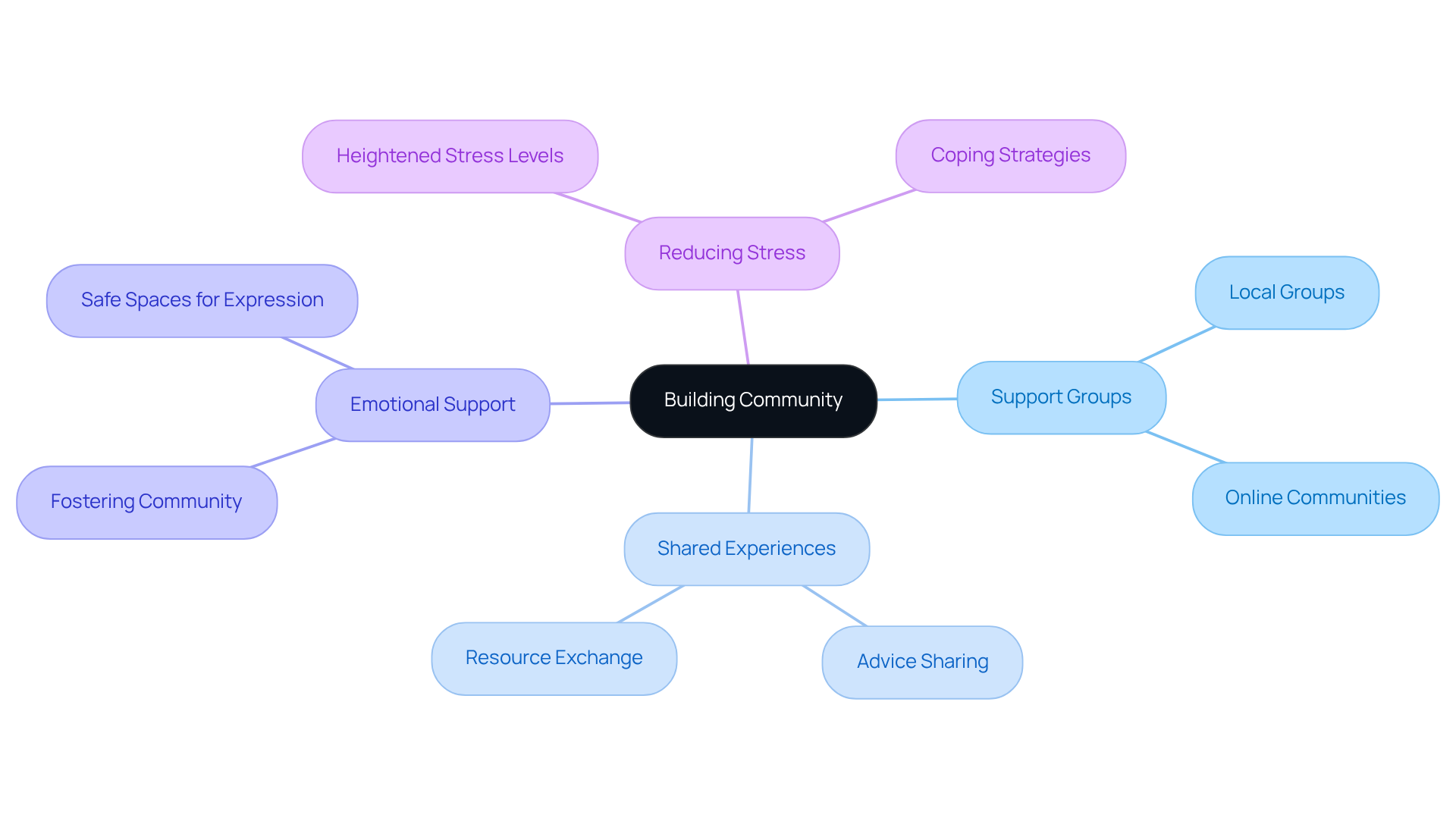
Conclusion
Creating a nurturing environment for autistic individuals begins with a deep understanding of their sensory sensitivities. This journey is not merely about adjustments; it’s about fostering empathy and empowerment for both parents and children. Engaging with practical strategies at home can significantly enhance a child's well-being and overall quality of life. By cultivating a sensory-friendly atmosphere, caregivers can address challenges effectively, reinforcing the importance of tailored interventions and supportive resources.
Key insights include:
- The identification of sensory triggers
- The implementation of sensory breaks
- The creation of visual schedules that offer a sense of predictability
Each of these strategies plays a vital role in helping children navigate their unique sensory experiences, leading to improved emotional regulation and social interactions. Moreover, community support and professional guidance are invaluable, empowering parents and caregivers to share knowledge and experiences that transform their approach to managing sensory issues.
Ultimately, the journey toward creating a sensory-friendly home is about more than just environmental changes. It’s about nurturing understanding and compassion. By connecting with available resources, engaging with supportive communities, and implementing effective strategies, meaningful improvements can emerge in the daily lives of those affected by autism. Taking proactive steps today can pave the way for a more comfortable and enriching future for autistic individuals and their families.
Frequently Asked Questions
What is the mission of ASD Media?
ASD Media aims to enhance the implementation of ABA therapy by providing effective strategies to manage challenging behaviors, improve social skills, and support children with autism in coping with sensory issues.
What resources does ASD Media offer for parents and professionals?
ASD Media offers a comprehensive array of resources, including the Autism Partner Toolkit, which supports both parents and professionals and fosters a collaborative community for sharing experiences and knowledge.
How can I stay updated with resources related to autistic sensory issues?
You can stay updated by subscribing to the ASD Media newsletter, which provides the latest resources to help manage autistic sensory issues.
What percentage of children in the U.S. are recognized with autism?
Approximately 1 in 31 children in the U.S. are recognized with autism.
What are sensory sensitivities, and how do they affect autistic individuals?
Sensory sensitivities refer to variations in sensory processing that many autistic individuals experience, with 90% to 95% encountering some form of sensory issues, which can include hypersensitivity or hyposensitivity to stimuli.
What are the four quadrants used to categorize sensory issues?
The four quadrants are Responsiveness, Seeking, Avoiding, and Low registration.
How can caregivers help autistic individuals with sensory processing challenges?
Caregivers can help by recognizing sensory triggers, implementing tailored interventions, and creating supportive environments that enhance overall well-being and social interactions.
What are common stimuli that can cause sensory overload in autistic children?
Common stimuli include bright lights, loud sounds, specific textures, and intense odors, which can lead to anxiety, agitation, or meltdowns.
How can parents identify sensory triggers for their children?
Parents can identify sensory triggers by closely observing their child's reactions to different environments and situations and recording specific triggers to understand their child's unique perceptual characteristics.
What signs indicate that a child may be experiencing sensory overload?
Signs of sensory overload can include withdrawal, distressed behavior, anxiety, or meltdowns, indicating the need for timely intervention.




